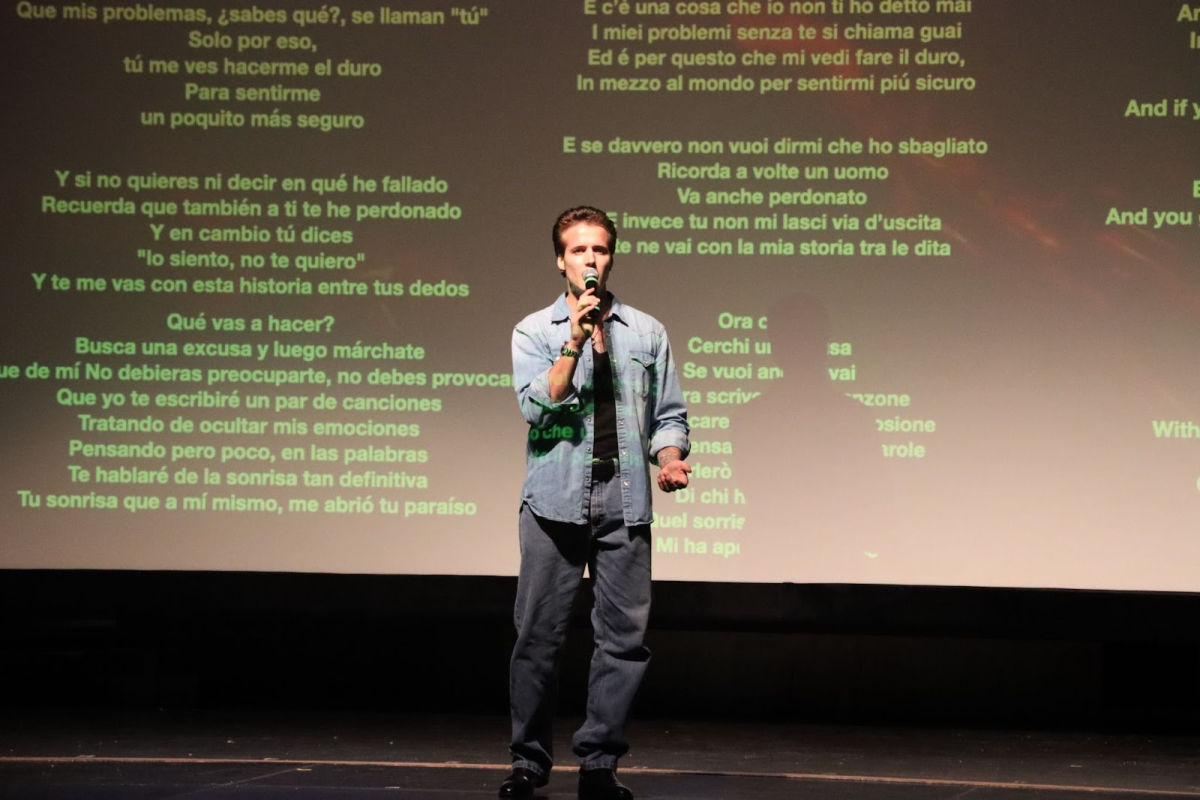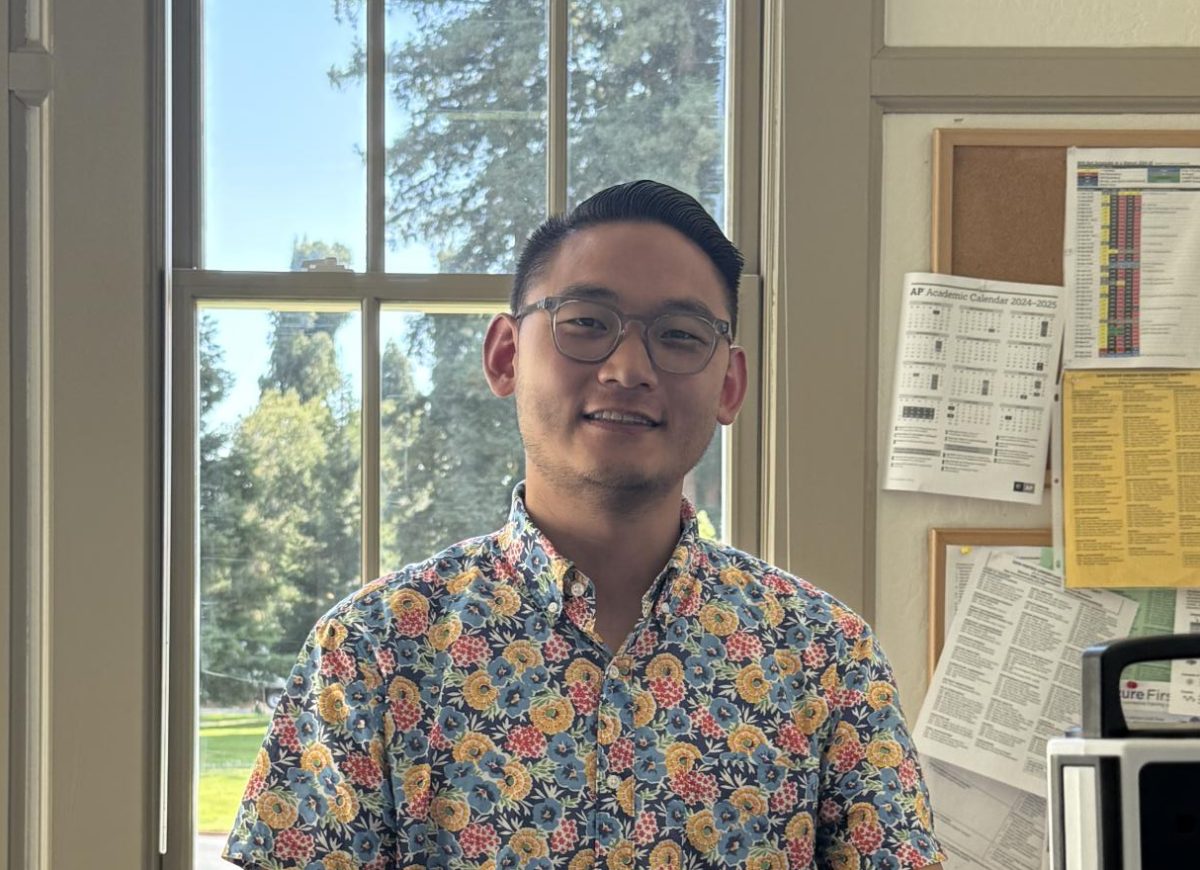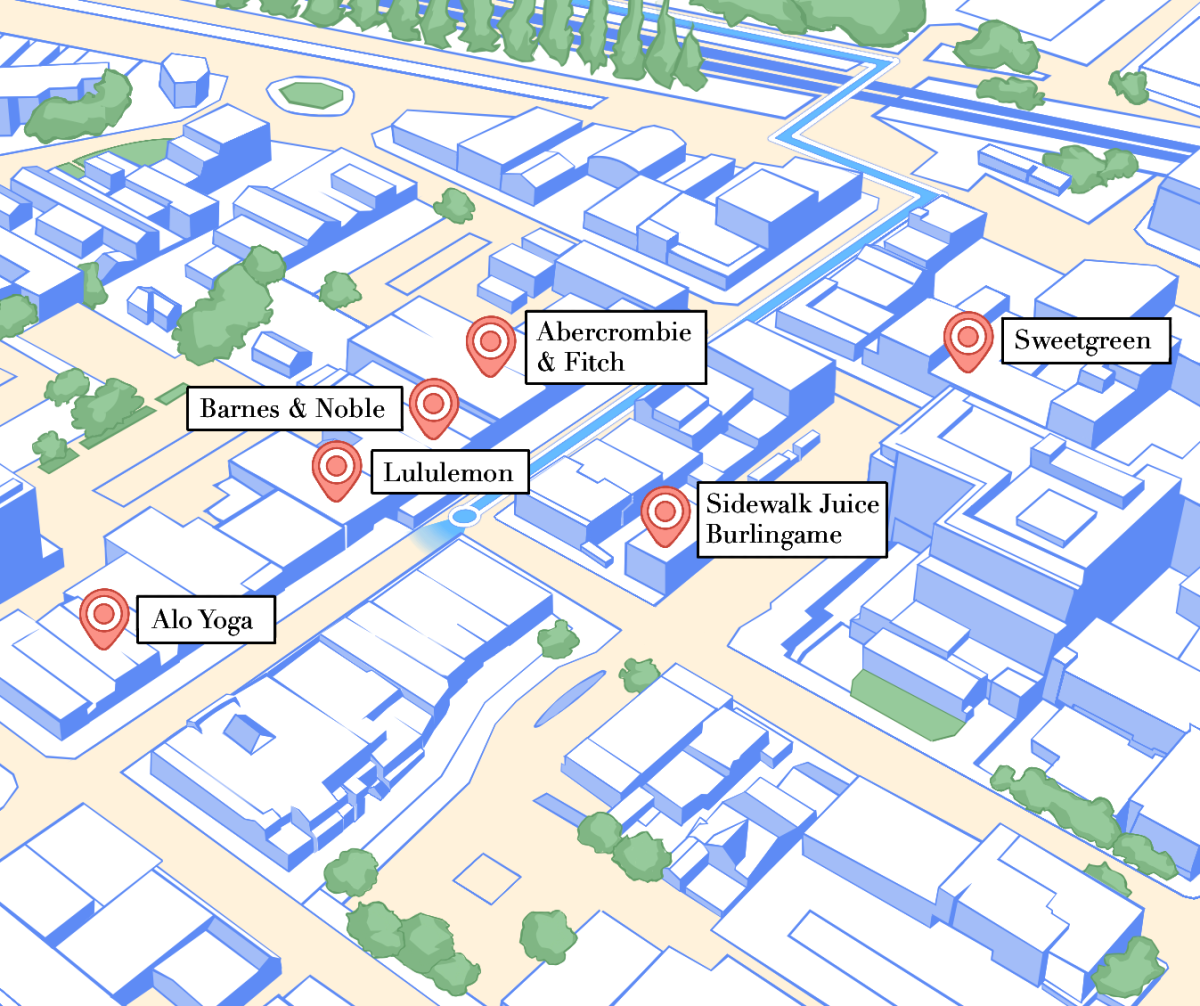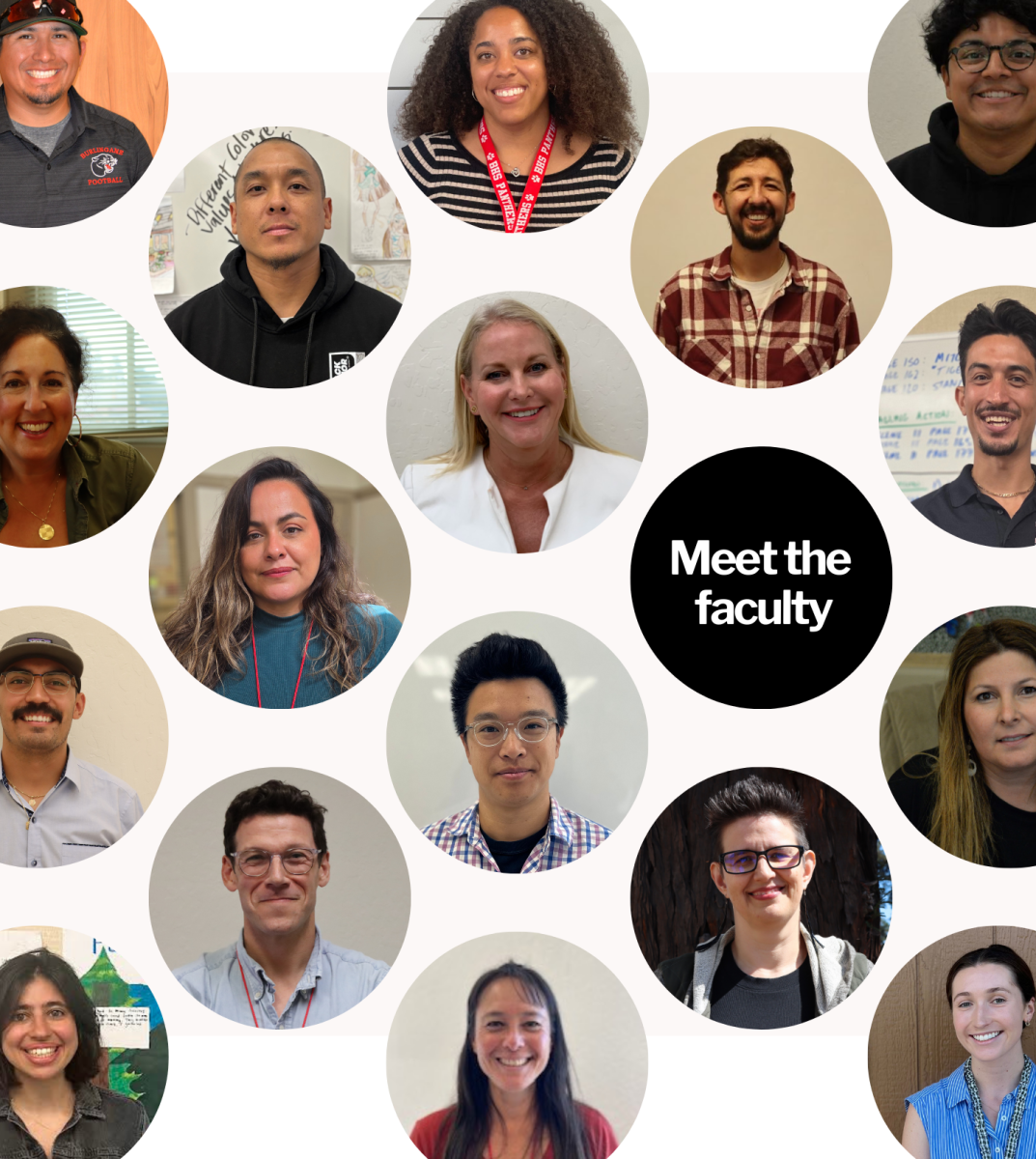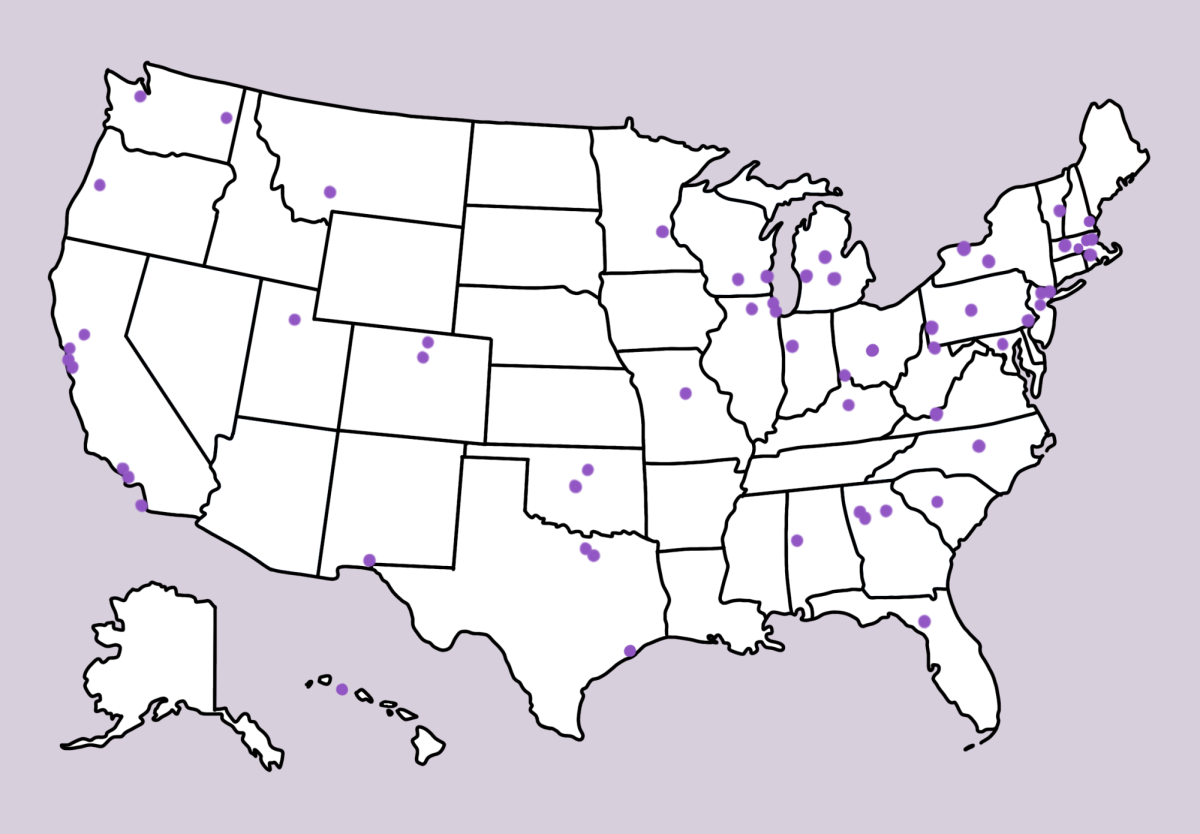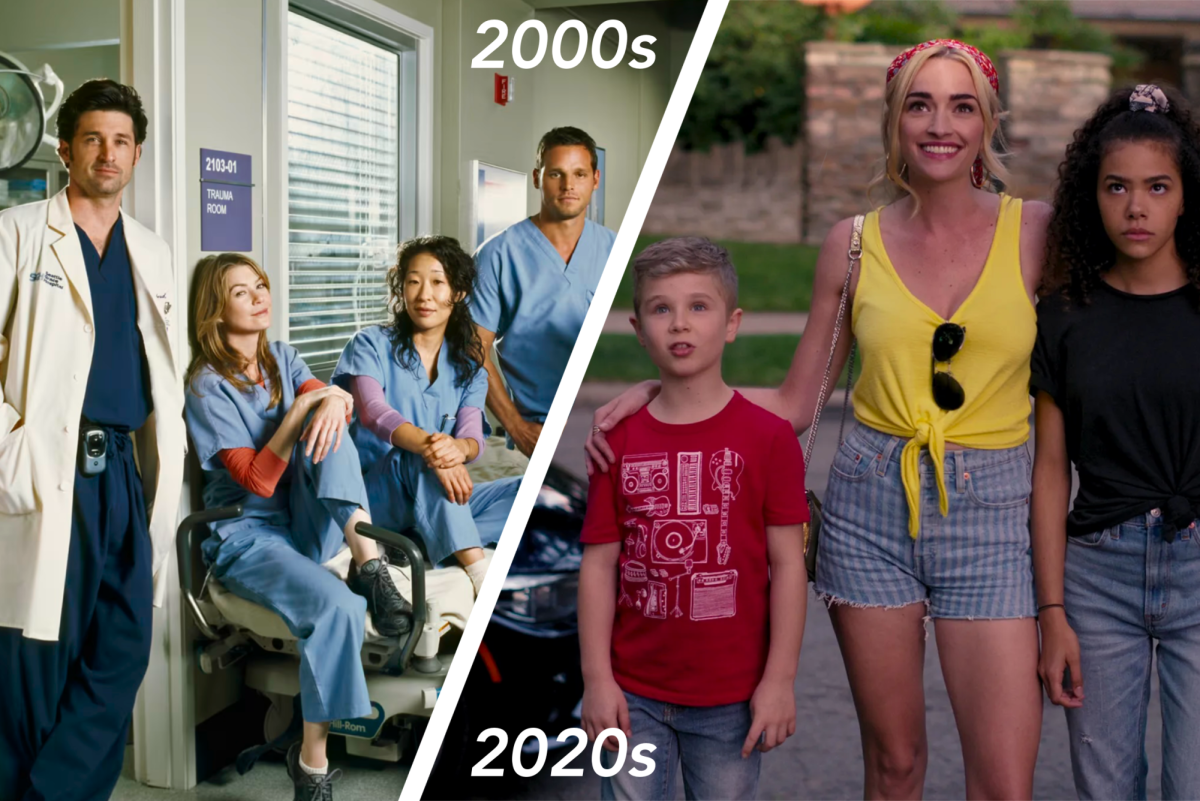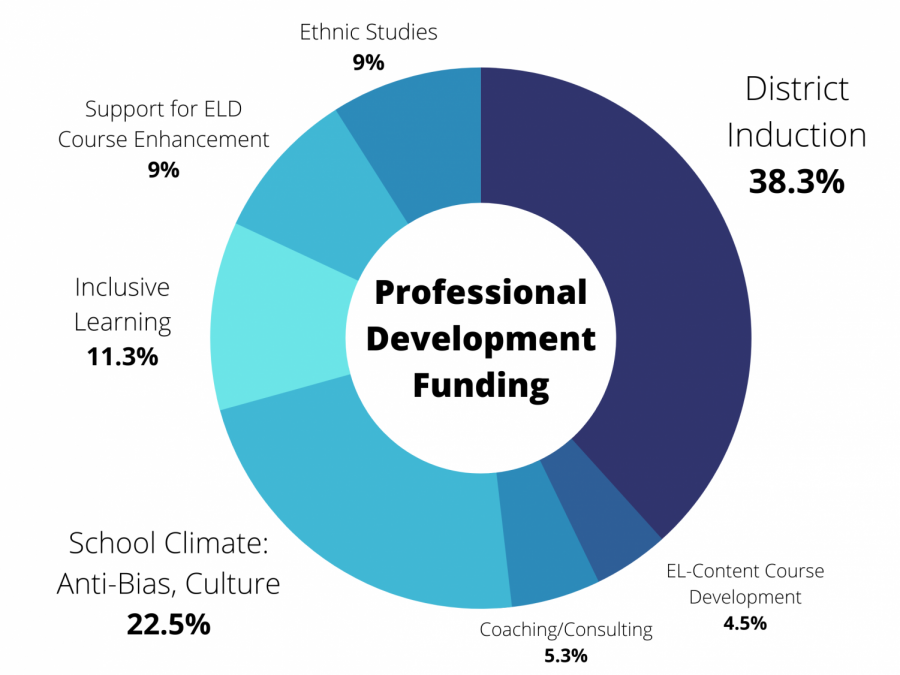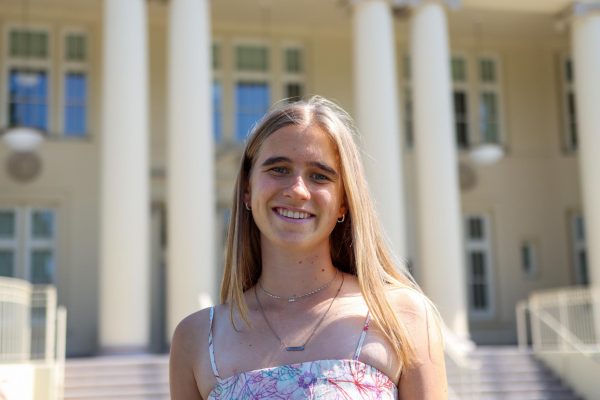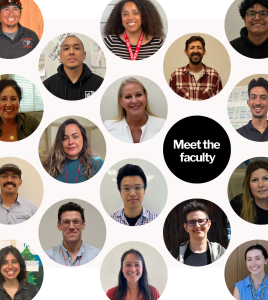Educator Effectiveness Block Grant for professional development aims to support induction program, school climate initiatives
The majority of the Educator Block Grant will be spent on an in-house induction program intended to support new teachers in the District and school climate initiatives related to anti-bias and improving culture.
December 5, 2021
Over the next five years, the San Mateo Union High School District will invest more than $2.2 million in professional development through the Educator Effectiveness Block Grant, with an emphasis on supporting incoming staff and funding anti-bias training.
This sustained investment in professional development, brought on by California’s budget surplus, is intended to bolster support for teachers in a wide variety of areas, from improved English Language Development (ELD) programs to an expanded ethnic studies curriculum.
Almost 75% of the District’s outlined spending — presented at the Board of Trustees meeting on Nov. 18 by Assistant Superintendent Julia Kempkey — will go to three goals: an in-house teacher induction program, anti-bias and school culture training and inclusive learning development.
“It’s a good report. It’s not overly complex like the LCAP or some of these other issues. You can see the key areas,” Board President Robert Griffin said. “We’re glad to have the opportunity to spend the money, and it looks like we have the areas mapped out.”
Induction program
The largest portion of the grant — $850,000 — will be invested in a new in-house induction program, easing the transition into the classroom for new teachers.
Induction programs offer two years of embedded professional learning to incoming teachers, pairing them with an experienced mentor and helping them to develop confidence in the classroom.
The San Mateo County Office of Education runs an induction program for K-12 teachers, and the District has historically contracted with them. However, this year — with a boost in funding from the grant — the District hopes to begin its own induction program better tailored to the needs of local high school teachers.
Professional Development and Induction Coordinator Sabbie Hopkins pointed to a main benefit of a district-based induction program: mentors that work at the school. With an in-house mentor, not only does a new teacher receive instruction, they develop connections with the faculty and become familiar with the school environment.
And with an in-house program, student performance data collected by the district can be applied to professional development. Areas where students need additional support — or could in the future — become the focus of mentoring and instruction.
“If the induction program is in-house, that information can be used to inform the professional learning for both the mentors and the newly hired teachers,” Hopkins said. “As a new teacher, it feels so much more relevant when you’re learning about what’s going on in your district.”
School climate
Of the grant, $500,000 will fund a range of staff development under the umbrella of enhancing school climate. This money will support three long-term projects: anti-bias training, practices to improve culture on campus and a summer training program.
This year, anti-bias training is at the core of professional development, Hopkins said. But investing in systemic change takes time and effort, she emphasized. While a spreadsheet can’t easily quantify the impact of anti-racist training, consistent funding over multiple years could go a long way.
“What’s the difference between spending money on produce at Whole Foods versus creating a community garden?” Hopkins said. “You may end up with produce as an end product, but there are a lot more benefits associated with the community garden in the long run.”
Board of Trustees reaction
After hearing Kempkey’s presentation, the trustees were largely complimentary of the proposed outline. However, each identified specific areas of development that they wanted to see targeted investment in.
Trustee Greg Land, for instance, spoke to the necessity of providing extended coaching and modeling for all programs, especially ELD and ethnic studies teachers.
Trustee Ligia Andrade Zúñiga pointed out that each SMUHSD campus has unique needs and serves unique communities; therefore, they should be evaluated separately. Zúñiga said it is imperative that the needs of teachers and students at Peninsula High School, the Adult School Program and The Bridge School are recognized and addressed.
“Since we have so many different communities and just different learning styles and just different people, how do we know that the students there are receiving the instruction that we are investing in, and then also the staff there?” Zúñiga said.
In a similar vein, Trustee Linda Lees Dwyer wanted to make sure that special education students and teachers receive their fair share of funding. She also emphasized the importance of putting professional development in practice and having mentors that provide hands-on support in an instructional setting.
“You could get really inspired, and you can learn things and go, “Wow, I can’t wait to try that!” Lees Dwyer said. “But then the reality sets in, and you’ve got this curriculum, you’ve got lesson planning, you’ve got all these things you’re doing. It seemed so easy, but it’s isn’t so easy when you go to implement it.”
Trustee Peter Hanley pressed the District on ways to evaluate the impact of professional development in the classroom and better assess whether these programs truly improve a students’ experience and success at school.
“How do we know that what we’re doing in year one leads to an improved performance in year two and on?” Hanley asked. “Is what we’re trying to do with this grant money actually improving the outcomes for students and for teachers?”
Looking to the future
Education funding can often feel like “feast or famine” — one year, an abundance of money, the next, an empty account — Hopkins said. While these fluctuations hamper long-term development, the Educator Block Grant does the opposite: it invests over five years to ensure sustained and consistent progress.
During the Board meeting, Land said the same, advocating for long-term investment in projects and programs.
“This is good to see [the grant’s] longevity, that it’s not just a one-year thing, that it’s over time,” Land said. “I think it’s really important, and I wish our state would keep doing things like this where it’s not just a one-shot deal.”






